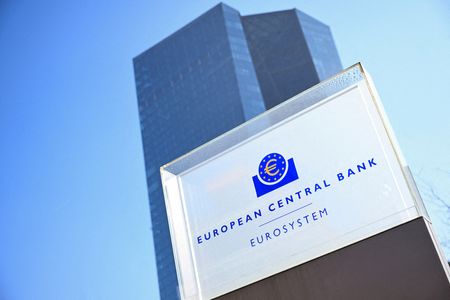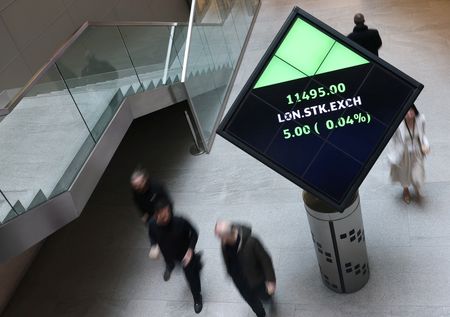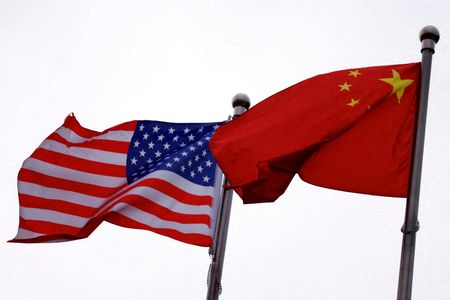By Stefano Rebaudo
(Reuters) -Euro area benchmark Bund yields hit a fresh one-month high and markets reduced bets on European Central Bank interest rate cuts on Monday as an easing in trade and geopolitical tensions allayed concerns about economic growth.
Remarks from ECB board member Isabel Schnabel also supported a reduction of bets on future ECB monetary easing.
The ECB should stop cutting borrowing costs as turmoil in the global economy is fuelling price pressures and inflation is at risk of exceeding the bank’s 2% target in the medium term, Schnabel said on Friday.
Then, speaking after talks with Chinese officials in Geneva, U.S. Treasury Secretary Scott Bessent told reporters the two sides had agreed on a 90-day pause on measures and that tariffs would come down by over 100 percentage points to 10%.
On the geopolitical front, Ukrainian President Volodymyr Zelenskiy said he would agree to meet Russian President Vladimir Putin in Turkey on Thursday, while a fragile ceasefire held between India and Pakistan.
“It’s a very much risk sentiment-driven market,” said Michiel Tukker, senior European rates strategist at ING, adding that momentum was seemingly heading in the right direction, after a lot of uncertainty surrounding trade deals and economic data.
Bund yields have a lot of scope to recover lost traction if U.S. President Donald Trump follows a “benign” approach to his trade policies, Tukker said.
Germany’s 10-year yield, the 20-nation euro area’s benchmark, rose 9.2 basis points (bps) at 2.64%, its highest level since April 10.
The euro zone benchmark has had a volatile few months after Germany’s shock announcement of plans to boost spending in March caused German borrowing costs to post their biggest weekly jump since the 1990s, with investors bracing for additional borrowing and stronger growth.
But German yields dropped sharply in April with investors taking refuge in the market as a safe haven amid a searing selloff in U.S. Treasuries driven by tariff fears.
Money markets priced in an ECB deposit facility rate of as much as 1.80% by year-end, returning a few bps above levels seen in mid-April before the European Central Bank suggested it was ready to cut rates in response to the potential adverse economic impact of U.S. tariffs.
The markets had indicated a deposit rate below 1.55% on April 25 and at 1.67% late Friday.
Investors priced policy rates around the December levels until summer 2026. The deposit rate is currently at 2.25%.
The German two-year yield, more sensitive to ECB policy rates, was up 14.4 bps at 1.93%, its highest in a month.
Italy’s 10-year yield rose 6.8 bps to 3.68%, leaving the spread between Italian and German yields – a market gauge of the risk premium investors demand to hold Italian debt – at 102 bps.
This week’s data include the U.S. consumer price index and retail sales, which may show the initial impact of tariffs.
“The U.S. inflation data is unlikely to change the Federal Reserve’s mind, as several members have recently expressed their awareness of upside risks to inflation expectations,” said Rainer Guntermann, rate strategist at Commerzbank.
(Reporting by Stefano Rebaudo and Linda Pasquini; Editing by Hugh Lawson, Sharon Singleton, David Evans and Mark Heinrich)









